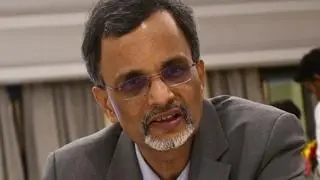Global economic developments are expected to complicate the outlook further, a report by the Finance Ministry released on Friday said.
This report, prepared by Economic Affairs Department, is being released at a time when key economies such as China and US are facing new wave of the pandemic. At the same time, while some of the economies especially in Europe are in recession, growth has slowed down in several others. Exception has been Japan which has upped its growth projection.
The report said that continued vigilance is a critical aspect in maintaining India’s external resilience. “No country can afford to sit on its laurels, India included. Continued commitment to macroeconomic stability will underpin both economic performance and investor interest in India. The latter is very high, currently. It needs to be nurtured,” it said.
Medium-term challenges
According to the report, going forward, India needs to focus on medium-term challenges such as securing technology and resources for energy transition and skilling its youth for the 21st-century economy while staying the course on fiscal consolidation at the general government level. “The good news is that much hard work has been done in the last several years and a strong platform has been erected on which the superstructure of a middle-income economy can be constructed,” it said.

The report noted India’s real GDP grew by 6.3 per cent in July-September quarter, aided by robust domestic demand and steady investment activity. Having reached a level 8 per cent higher than the corresponding pre-pandemic level of 2019-20, Q2 of 2022-23 also marked a post-recovery growth for the Indian economy. Sequentially, the real GDP grew by 3.6 per cent from Q1 to Q2, sustaining the growth momentum that emerged at the beginning of the year.
“The growth momentum built up in Q2 has been sustained in Q3 of 2022-23 as well, as indicated in the performance of High-Frequency Indicators (HFIs) during October and November,” it said while adding that retail inflation based on Consumer Price Index (CPI) is below the upper tolerance level of 6 per cent in November after a gap of 10 months.
However, the report noted that despite the decline in headline inflation, core inflation continued to remain sticky and persisted at an elevated level of 6 per cent in November, partially reflecting increased pass-through of high manufacturing costs to consumer prices as demand continues to recover swiftly
Investment rate
Meanwhile, it highlighted that the real investment rate during Q2:2022-23 prevailing at a high level of 34.6 per cent demonstrates the government’s continued commitment towards asset creation. The Centre’s capital expenditure expanded by 61.5 per cent during the first seven months of 2022-23, reaching ₹4.1-lakh crore, which is 54.6 per cent of the available budget. Private investment has been gathering pace and is expected to remain upbeat, also apparent in the rising sectoral deployment of bank credit growth. The external front remains resilient, with stable foreign direct investment inflows, resurgent FPI inflows, and adequate foreign exchange reserves providing an import cover of 9 months. As a result, the Indian rupee has performed well compared to other EMEs., it said.








Comments
Comments have to be in English, and in full sentences. They cannot be abusive or personal. Please abide by our community guidelines for posting your comments.
We have migrated to a new commenting platform. If you are already a registered user of TheHindu Businessline and logged in, you may continue to engage with our articles. If you do not have an account please register and login to post comments. Users can access their older comments by logging into their accounts on Vuukle.